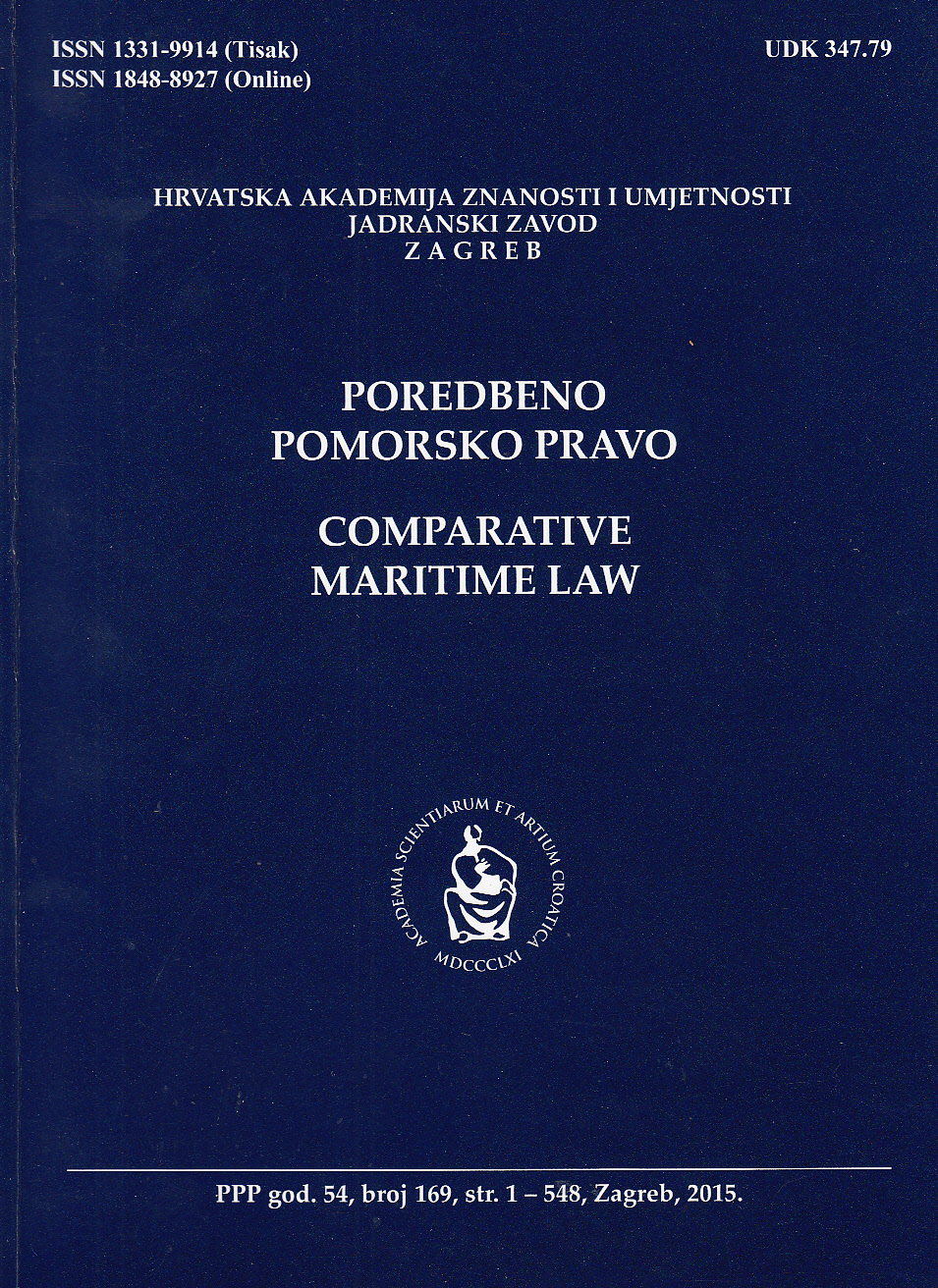Granice podmorskih prostora jadranskih država
The boundaries of the submarine areas of the Adriatic states
Author(s): Marina Vokić Žužul, Valerija FilipovićSubject(s): International Law, Maritime Law, Commercial Law
Published by: Hrvatska akademija znanosti i umjetnosti
Keywords: Adriatic states; Adriatic sea; submarine areas; maritime boundaries; delimitation; territorial sea; continental shelf; sea-bed and subsoil;
Summary/Abstract: This paper analyses all the established boundaries of submarine areas in the Adriatic, as well as those that are yet to be defined, especially in the context of the recent exploring and exploiting of its natural resources. In addition to Croatia and Italy that share the largest proportion of the seabed and subsoil in the Adriatic, Montenegro and Albania are also entitled to their own continental shelves. Two Adriatic states with the shortest coastlines – Slovenia and Bosnia and Herzegovina are geographically disadvantaged states, and cannot have their own continental shelves as a natural prolongation of their land territory. Therefore, the submarine areas of those countries terminate on the outer limit of their territorial sea. Aside from the consideration of these boundaries and continental shelf boundaries established by the agreements between the Adriatic states, the authors also critically examine Slovenia’s unilateral acts on the proclamation of the continental shelf of 2005, which have no basis in the international law. This paper focuses on the consideration of the existing continental shelf boundary that divides the submarine areas between Croatia and Italy, as the future boundary of their superjacent waters. In accordance with the United Nations Convention on the Law of the Sea, this boundary line should become a single maritime boundary of their continental shelves and exclusive economic zones (that is, the ecological protection zone of Italy and the ecological and fisheries protection zone of the Republic of Croatia). Such a single all-purpose boundary is in the best interest of legal certainty in all uses of the sea. In the recent decades, it has completely replaced various delimitation lines for several maritime zones in the same maritime area, in the practice of international courts and tribunals. With respect to the results of the recently conducted explorations of potential oil and gas fields in the southern Adriatic, the paper also draws attention to the necessity of drawing the line of the lateral boundary of the continental shelf between Croatia and Montenegro, as soon as possible. The authors analyze the possible directions of the new boundary, taking into account that the temporary line, determined by the Protocol between the Government of the Republic of Croatia and the Federal Government of the Federal Republic of Yugoslavia on temporary border regime along the southern border between the two states in 2002, deviates significantly from the equidistance line.
Journal: Poredbeno pomorsko pravo
- Issue Year: 54/2015
- Issue No: 169
- Page Range: 9-56
- Page Count: 48
- Language: Croatian

